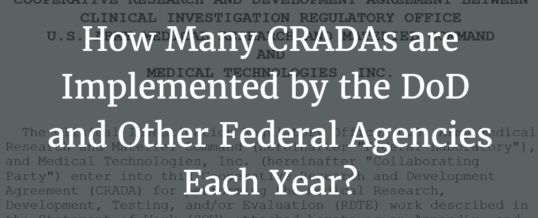There are many types of Cooperative R&D Agreement (CRADA) instruments and processes used by the Department of Defense (DoD), Department of Veterans Affairs (VA) and other Federal Agencies. Each type of CRADA presents a different mechanism or path to establishing meaningful and long-term collaborations between Federal and non-Federal entities to foster R&D innovation and improve the transition and commercialization of required technologies. This list of the types of CRADAs utilized by the DoD and VA is not ...
Continue Reading →JUN



